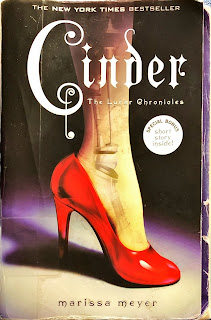SUMMARY
When Daniel is found brutally murdered on a houseboat, three women come under suspicion: his one night stand, Laura, his aunt, Carla, and his nosy neighbor, Miriam. Each woman has a motive. But which one - if any - of these women was capable of murder?
EVALUATION
Paula Hawkins tells her story from multiple points of view, including all three women who have apparent motive for the murder, and adding Theo, Carla’s husband, and Irene, Daniel’s mom’s neighbor. Hawkins did an impressive job letting the reader into the minds of all five characters - including the killer’s - without giving anything away. At some point in the novel, I definitely thought each character was guilty.
Although categorized as a “thriller” this book left a little to be desired in the “thrill” category. For example, there’s a scene where Irene wakes up in the night because she hears a noise. The suspenseful setup is there, but the reality of the situation is just that someone is next door. In a different apartment. Walking on the stairs. Having noisy neighbors can be annoying, but certainly not “thriller” material!
Although the “thriller” aspect flopped, this book was definitely an engaging, if somewhat unoriginal, “whodunnit.” Each character was well set up with motives, confusing alibis, and twisted connections to each other and to Daniel.
Finally, I struggled a little with the whole part about Jeremy and the flashbacks to The One Who Got Away. I understand he was part of the story to help give Miriam motive and to outline how killers/victims might not always be what they seem, but I didn’t think it was a very satisfactory addition to the story, especially the way it was resolved. I think Hawkins tried to bite off more than she could chew with that added layer to the story.
CONCLUSION
While A Slow Fire Burning didn’t grab me as much as The Girl on the Train, it still showcased Paula Hawkins’ superb ability to keep her readers guessing the whole time. Overall, it was a lot of fun and I certainly didn’t want to put it down.
RATING
Three stars, nothing spectacular but a good time nonetheless.
RECOMMENDATIONS based on what I’ve read:
The Girl on the Train by Paula Hawkins
The Guest List by Lucy Foley
The Wife Upstairs by Rachel Hawkins





